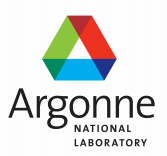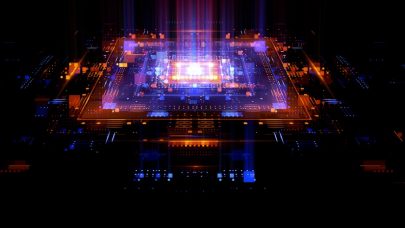SAN FRANCISCO, March 29, 2021 — The Accelerating Therapeutics for Opportunities in Medicine (ATOM) consortium today announced the U.S. Department of Energy’s Argonne, Brookhaven and Oak Ridge national laboratories are joining the consortium to further develop ATOM’s artificial intelligence (AI)-driven drug discovery platform.
 The public-private ATOM consortium aims to transform drug discovery from a slow, sequential and high-risk process into a rapid, integrated and patient-centric model. Founded in 2017, ATOM is developing a pre-competitive, pre-clinical drug design platform that integrates diverse data types such as physicochemical properties, in vitro assay results and anonymized human clinical data, with AI, high-performance computing (HPC) and advanced experimental technologies. The goal is to shorten the drug discovery timeline from five years to less than one year.
The public-private ATOM consortium aims to transform drug discovery from a slow, sequential and high-risk process into a rapid, integrated and patient-centric model. Founded in 2017, ATOM is developing a pre-competitive, pre-clinical drug design platform that integrates diverse data types such as physicochemical properties, in vitro assay results and anonymized human clinical data, with AI, high-performance computing (HPC) and advanced experimental technologies. The goal is to shorten the drug discovery timeline from five years to less than one year.
“Bringing the experience and expertise from three additional DOE national laboratories to ATOM’s current partners, including the Frederick National Laboratory for Cancer Research (FNL), sponsored by the National Cancer Institute, reinforces ATOM as a valuable national resource to create powerful new capabilities for the cancer research community, building collaborations and driving advances in translational research to develop treatments more quickly,” said Eric Stahlberg, director of the Biomedical Informatics and Data Science group at FNL and co-lead of the ATOM consortium. “As the nation’s only national laboratory focused exclusively on biomedical research, including cancer, AIDS and emerging health threats, FNL has significant resources to apply to the challenges in finding new and effective treatments, and we are thrilled to add these new members to help ATOM achieve its lofty and potentially transformational goals.”
 “It’s exciting to welcome three new national laboratories into the expanded ATOM consortium,” added Jim Brase, deputy associate director for computing at Lawrence Livermore National Laboratory and ATOM co-lead. “Their combined world-class expertise and experience in computing, simulation and machine learning will accelerate our progress toward molecular design of new therapeutics for the public good.”
“It’s exciting to welcome three new national laboratories into the expanded ATOM consortium,” added Jim Brase, deputy associate director for computing at Lawrence Livermore National Laboratory and ATOM co-lead. “Their combined world-class expertise and experience in computing, simulation and machine learning will accelerate our progress toward molecular design of new therapeutics for the public good.”
Argonne National Laboratory (ANL) is a leader in high-performance computing and computer sciences, including data science, applied mathematics and computational science. As a member of the consortium, the Argonne Leadership Computing Facility will be leveraged to perform advanced simulations in life sciences, including molecular biology, microbiology, protein chemistry, bioinformatics, computational biology, environmental sciences and other scientific fields. Through this collaboration, Argonne will extend its deep expertise in creating groundbreaking machine learning analytics in biological and life sciences, and gain access to unique and complementary data in predictive biology and medicinal chemistry. Additionally, with its Aurora exascale computing system planned for 2022, Argonne will contribute unmatched computation resources to this collaboration.
 “We are excited to officially join the ATOM consortium, having collaborated closely with members on scientific research efforts since its formation,” said Rick Stevens, Argonne associate laboratory director for Computing, Environment and Life Sciences. “At Argonne we are actively developing and applying computational and machine learning approaches to a broad range of challenges in life sciences, including drug screening for COVID-19 and cancer. We look forward continuing these efforts as part of the ATOM consortium.”
“We are excited to officially join the ATOM consortium, having collaborated closely with members on scientific research efforts since its formation,” said Rick Stevens, Argonne associate laboratory director for Computing, Environment and Life Sciences. “At Argonne we are actively developing and applying computational and machine learning approaches to a broad range of challenges in life sciences, including drug screening for COVID-19 and cancer. We look forward continuing these efforts as part of the ATOM consortium.”
Within ATOM, Brookhaven National Laboratory (BNL) will share its experience in creating scalable HPC frameworks that support optimal experimental design (OED) active-learning workflows for advanced simulations. These frameworks are designed to engage machine learning that can work with the complex, nonlinear and uncertain aspects that tend to characterize cancer drug therapy research. BNL’s contributions will include model-data integration, developing a reinforcement learning/active learning-guided OED workflow that works on the existing drug candidate dataset and designing a software framework to support scalable, adaptive algorithms used in the drug design and simulation pipeline.
“At Brookhaven, we are excited to apply our team’s work developing and using optimization algorithms directly to ATOM’s diverse computational data-driven modeling efforts,” said Francis J. “Frank” Alexander, deputy director of the Computational Science Initiative. “Often, mathematical models and systems of interest to ATOM cancer therapy problems are uncertain and under-characterized due to their extremely complex nature. At Brookhaven, our artificial intelligence, machine learning and applied mathematics work aims to unravel complexities to design computational and laboratory experiments that achieve discovery goals in the most efficient manner. We believe these efforts will have significant applications in ATOM that can greatly benefit and enhance the program’s impact. We look forward to contributing as part of the collaboration.”
 Oak Ridge National Laboratory (ORNL) is the largest Department of Energy science and energy laboratory with expertise in accelerating scientific discovery through modeling and simulation on powerful supercomputers, data-intensive science and biological systems research. ORNL will apply its unique capabilities to examine the complex and dynamic interactions between candidate molecules and the human body. This approach, focused on quantitative systems pharmacology, predicts the window between an effective low dose of a drug and a higher dose that would be likely to elicit adverse effects. To better predict these therapeutic parameters, scientists are combining AI with systems models that represent proteins, organs and cellular processes. These data about relevant biological processes will integrate into the ATOM workflow to increase the chances of success when molecules go to clinical trials. ORNL is also building the nation’s first exascale-class supercomputer, Frontier, which will allow researchers to solve increasingly complex biological problems when it comes online in late 2021.
Oak Ridge National Laboratory (ORNL) is the largest Department of Energy science and energy laboratory with expertise in accelerating scientific discovery through modeling and simulation on powerful supercomputers, data-intensive science and biological systems research. ORNL will apply its unique capabilities to examine the complex and dynamic interactions between candidate molecules and the human body. This approach, focused on quantitative systems pharmacology, predicts the window between an effective low dose of a drug and a higher dose that would be likely to elicit adverse effects. To better predict these therapeutic parameters, scientists are combining AI with systems models that represent proteins, organs and cellular processes. These data about relevant biological processes will integrate into the ATOM workflow to increase the chances of success when molecules go to clinical trials. ORNL is also building the nation’s first exascale-class supercomputer, Frontier, which will allow researchers to solve increasingly complex biological problems when it comes online in late 2021.
“Tightly coupling these quantitative systems pharmacology models with the larger AI workflow is what sets ATOM apart from other AI-driven drug discovery methods,” said Marti Head, who played a pivotal role in the formation of ATOM during her time at GlaxoSmithKline and now serves as director of the ORNL-University of Tennessee Joint Institute for Biological Sciences. “By integrating high-performance computing, simulation, and big data with chemistry and biology at scale, we can think about drug discovery in one coherent, networked piece and get drugs to patients faster with a greater probability of success. Thinking about the challenges we’ve all been struggling with since the start of the COVID-19 pandemic in March of 2020 is a perfect example of why having these drug discovery tools that can operate holistically and help us move faster is so important for the world.”
About ATOM
The Accelerating Therapeutics for Opportunities in Medicine (ATOM) consortium is a public-private partnership with the mission of transforming drug discovery by accelerating the development of more effective therapies for patients. ATOM’s goal is to transform drug discovery from a slow, sequential, and high-failure process into a rapid, integrated, and patient-centric model. The consortium is integrating high performance computing, diverse biological data, and emerging biotechnologies to create a new pre-competitive platform for drug discovery. Visit www.atomscience.org.
About ANL
Argonne National Laboratory seeks solutions to pressing national problems in science and technology. The nation’s first national laboratory, Argonne conducts leading-edge basic and applied scientific research in virtually every scientific discipline. Argonne researchers work closely with researchers from hundreds of companies, universities, and federal, state and municipal agencies to help them solve their specific problems, advance America’s scientific leadership and prepare the nation for a better future. With employees from more than 60nations, Argonne is managed by UChicago Argonne, LLC for the U.S. Department of Energy’s Office of Science.
About BNL
Brookhaven National Laboratory delivers discovery science and transformative technology to power and secure the nation’s future. Primarily supported by DOE’s Office of Science, Brookhaven Lab is a multidisciplinary laboratory with seven Nobel Prize-winning discoveries, 37 R&D 100 Awards, and more than 70 years of pioneering research. Brookhaven is managed for the Office of Science by Brookhaven Science Associates, a partnership between Stony Brook University and Battelle. For more information, visit https://energy.gov/science.
About ORNL
Oak Ridge National Laboratory delivers scientific discoveries and technical breakthroughs needed to realize solutions in energy and national security and provide economic benefit to the nation. ORNL is managed by UT-Battelle for the DOE Office of Science, the single largest supporter of basic research in the physical sciences in the United States. DOE’s Office of Science is working to address some of the most pressing challenges of our time. For more information, please visit https://energy.gov/science.
Source: BNL
































































